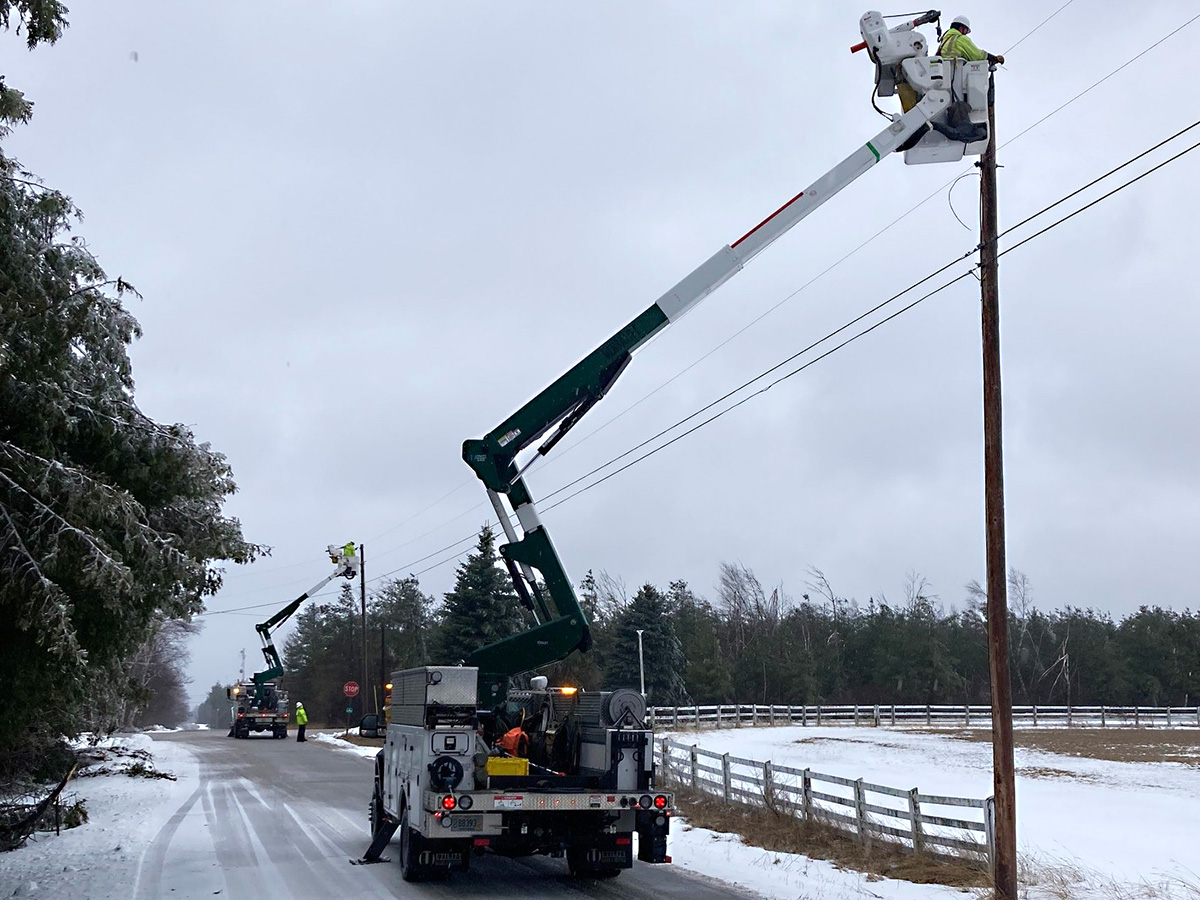When the only certainty is uncertainty, individuals and communities can take measures to prepare themselves for future emergencies and extreme weather events, Door County Emergency Services Director Jeb Saelens said.
A geographically isolated community like Washington Island having cots, pallets of water, dry goods and medical supplies on hand, as well as a portable repeater tower for communications would be optimal, Saelens said.
Door County Emergency Management will continue working with all local municipalities to help them be as prepared as possible, he added.
According to Saelens and local emergency responders, climate experts and utility management representatives, Door County residents can do the following to be better prepared in the event of weather emergencies and power outages:
- Clear driveways of overhanging vegetation and trees so emergency and utility vehicles can access your property.
- Trim vegetation and trees surrounding electrical poles and wires on your property so there is less likelihood of damage during extreme weather events.
- If purchasing a generator, there are many different sizes and kinds. Understand and follow all maintenance and running requirements for the machine you have. Perform test runs regularly and store in a heated environment so it is ready to start when needed.
- Sign up for emergency notifications from Door County Ready: https://www.smart911.com/smart911/ref/reg.action?pa=doorwi
- Make sure your emergency notifications on your mobile phone are turned on.
For Android: open the Settings app, go to “Notifications” or “Safety and emergency”, look for an option like “Wireless Emergency Alerts” or “Emergency Alerts”, and use the toggles to enable the alerts you want to receive, such as AMBER Alerts, Public Safety Alerts, and Severe Weather Alerts.
For iPhone: open the Settings app, tap “Notifications”, find the “Government Alerts” section, and enable the alerts you want to receive, such as “Emergency Alerts”, “AMBER Alerts”, and “Public Safety Alerts”
- Establish an individual home plan with a checklist of things to do in an emergency: https://readywisconsin.wi.gov/make-a-plan/
- Have a “go-kit” prepared with medications, important documents, food, clothes and water for 72 hours.
- Fill your bathtub or buckets with water when there is an extreme weather forecast. This is useful for flushing toilets or having water to rinse things.
- Fill empty space in freezers with milk jugs or other containers of water to freeze. The ice will keep your freezer colder for longer in a power outage and is also a source of drinking water.
- Have candles, flashlights and lanterns readily available with working batteries.
- Mentally prepare. There is a lot you can do without power to pass time and keep spirits up. Board games, cards, reading, drawing, playing an instrument, singing, telling stories.
Use history as a guide to be more resilient and feel less “powerless” when the lights go out. Island resident Peg Nikolai remembers a time when electricity was not readily available, and she said, “We used to know what to do without electricity, how to keep ourselves busy and entertained.”

